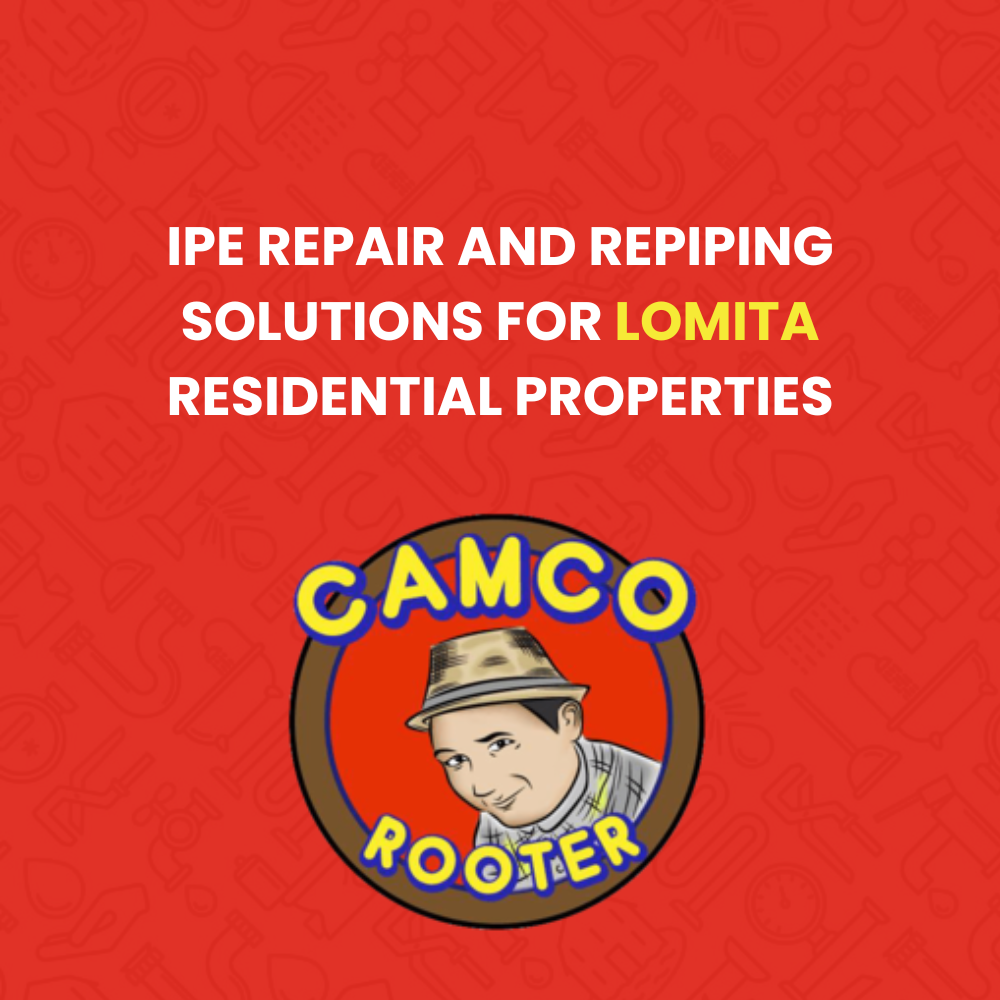Lomita homeowners face unique challenges with aging plumbing infrastructure that requires professional assessment and strategic repair or replacement solutions. Whether dealing with deteriorating galvanized pipes in older neighborhoods or addressing slab leaks in mid-century homes, understanding modern pipe repair and repiping options helps property owners make informed decisions that protect their investments while ensuring reliable water delivery throughout their homes.
Understanding Pipe Deterioration in Lomita Homes
Common Causes of Pipe Failures
Pipe problems develop gradually through various mechanisms that eventually compromise system integrity. Corrosion represents the primary culprit in older Lomita homes, particularly those built before 1970 when galvanized steel piping dominated residential construction. These pipes corrode from inside out, causing reduced water pressure, discolored water, and eventually pinhole leaks or complete failures.
Hard water conditions common throughout the South Bay accelerate mineral accumulation inside pipes, restricting flow and placing additional stress on deteriorating materials. Temperature fluctuations, ground shifting, and normal wear contribute to joint failures and crack development over time.
Warning Signs of Pipe Problems
Recognizing early warning signs enables proactive intervention before catastrophic failures occur. Discolored or rusty water indicates advanced corrosion requiring immediate attention. Reduced water pressure throughout the home suggests widespread restriction from mineral buildup or corrosion. Unexplained water bills increases signal hidden leaks wasting water and potentially damaging your property.
Professional residential plumbing services can assess these symptoms and recommend appropriate solutions tailored to your specific situation and budget constraints.
Slab Leak Detection and Repair
Unique Challenges of Under-Slab Piping
Slab leaks present particularly challenging problems for Lomita homeowners with concrete foundation construction. Water lines running beneath concrete slabs become inaccessible without specialized detection equipment and repair techniques. These leaks waste enormous water quantities while potentially undermining foundation integrity through soil erosion.
Advanced leak detection technology locates under-slab leaks without destructive investigation. Acoustic sensors, thermal imaging, and pressure testing pinpoint exact leak locations, enabling targeted repairs that minimize property disruption and cost.
Repair vs. Rerouting Options
Slab leak repairs involve either accessing pipes through the concrete slab or rerouting lines above ground or through attic spaces. The optimal approach depends on leak location, pipe condition, and long-term reliability considerations. Extensive slab leaks or deteriorating pipes throughout the home often warrant complete repiping rather than isolated repairs.
Traditional Pipe Repair Methods
Targeted Repairs for Isolated Problems
Minor pipe problems sometimes require only focused repairs addressing specific failures without replacing entire systems. Professional plumbers can replace damaged sections, repair joints, or install new fittings to resolve isolated issues. These solutions work well when overall pipe condition remains good and problems involve specific locations rather than systemic deterioration.
Understanding common residential plumbing issues and how to prevent them helps homeowners recognize when targeted repairs suffice versus requiring comprehensive replacement.
Limitations of Partial Repairs
However, repeated repairs on aging pipe systems often cost more over time than comprehensive repiping. Each repair disrupts your home and provides only temporary relief when underlying pipe deterioration continues. Professional assessment helps determine whether repair or replacement provides better long-term value.
Whole House Repiping Solutions
When Complete Replacement Makes Sense
Whole house repiping involves replacing all water supply lines throughout your property with modern materials engineered for extended service life. This comprehensive approach eliminates recurring problems associated with deteriorating pipes while providing peace of mind through improved reliability and performance.
Homes over forty years old with original galvanized piping almost always benefit from complete repiping. Properties experiencing multiple leak incidents, chronic low pressure, or water quality problems also warrant repiping consideration. The upfront investment prevents ongoing repair costs while improving home value and marketability.
Minimal Disruption Installation Techniques
Modern repiping techniques minimize property disruption compared to traditional methods. Experienced contractors strategically access pipes through carefully selected locations, limiting drywall removal and repair requirements. Efficient crews complete most residential repiping projects within days rather than weeks, quickly restoring normal household functions.
Copper Pipe Installation
Advantages of Copper Piping
Copper piping has served as the residential plumbing standard for decades due to proven reliability, durability, and performance. This material naturally resists bacterial growth, withstands high temperatures, and provides long service life when properly installed. Many Lomita homeowners prefer copper for its traditional proven track record and universal acceptance among plumbers and building inspectors.
Copper’s rigidity and strength make it ideal for exposed installations and areas subject to physical impact. The material’s longevity often exceeds fifty years with proper water chemistry and installation practices.
Cost Considerations
Copper represents the premium piping option with higher material costs than alternatives. However, its extended lifespan and reliability often justify the additional investment for homeowners planning long-term property ownership. Installation labor costs remain comparable across different piping materials since technique requirements prove similar.
PEX Piping Technology
Modern Flexible Alternative
Cross-linked polyethylene (PEX) piping has revolutionized residential plumbing through flexibility, ease of installation, and excellent performance characteristics. This material resists corrosion, mineral buildup, and temperature extremes while providing quiet operation compared to rigid piping systems.
PEX’s flexibility enables continuous runs with fewer fittings, reducing potential leak points and installation time. The material expands slightly when frozen, resisting burst damage that destroys rigid pipes during extreme cold snaps.
Installation Efficiency Benefits
PEX installation proceeds more quickly than copper due to simpler joining methods and material flexibility. Contractors can snake PEX through existing walls with minimal access points, dramatically reducing drywall damage and repair requirements. These efficiencies translate to lower labor costs without compromising quality or reliability.
Learning about how much it costs to do a water line repipe helps Lomita homeowners budget appropriately for their specific situations and material preferences.
Trenchless Pipe Replacement Technology
Innovative No-Dig Solutions
Trenchless technology provides revolutionary alternatives to traditional excavation-based pipe replacement. These methods install new pipes with minimal surface disruption, preserving landscaping, hardscaping, and structures while reducing project timelines and costs.
Pipe bursting technology and pipe lining techniques both fall under the trenchless category, each offering specific advantages depending on pipe condition, material, and accessibility. Professional assessment determines which approach suits your specific situation.
Cost and Time Savings
While trenchless methods may carry higher per-foot costs than traditional excavation, overall project expenses often prove comparable or lower due to eliminated excavation, restoration, and landscape replacement costs. Completed projects typically finish in days rather than weeks, minimizing household disruption.
Permitting and Code Compliance
Lomita Building Requirements
All pipe repair and repiping work in Lomita requires appropriate permits ensuring compliance with California plumbing codes and local amendments. Licensed contractors handle permit acquisition, schedule required inspections, and ensure all work meets current standards. This regulatory compliance protects homeowners through verified quality and provides documentation valuable during property sales.
Insurance and Warranty Protection
Professional repiping includes warranties covering materials and workmanship, protecting your investment against defects or installation problems. Licensed contractors carry insurance shielding homeowners from liability for worker injuries or property damage during projects.
Protecting Your Investment
Quality pipe repair and repiping services protect Lomita homes from water damage while ensuring reliable plumbing performance for decades. Working with experienced local contractors familiar with area-specific challenges and building requirements ensures optimal results tailored to your property’s unique needs and your family’s requirements.


